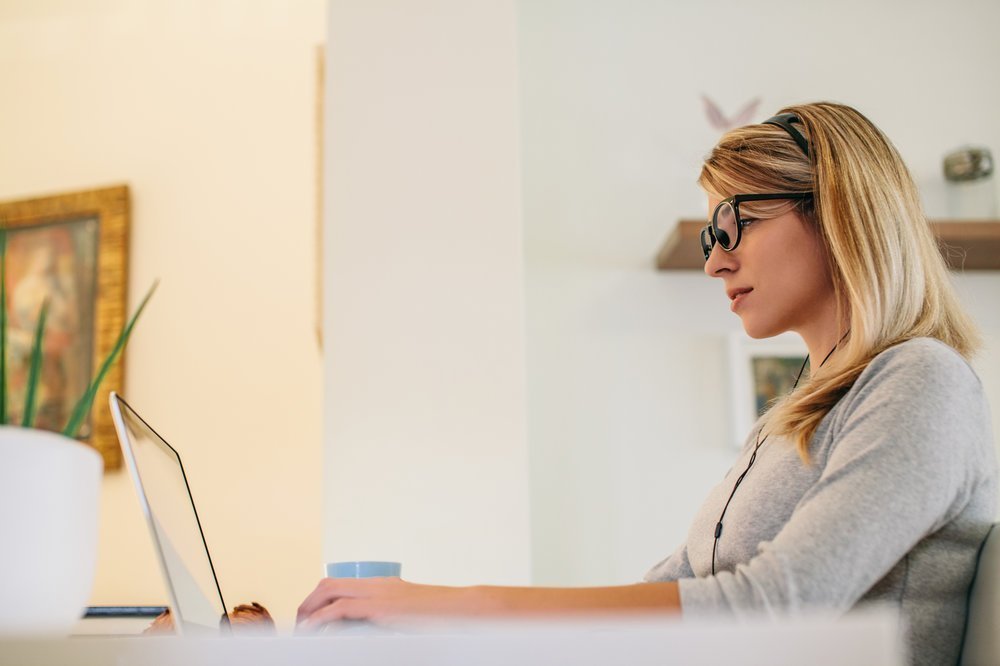Thanks for subscribing!
You will now receive future content from Lyra Health.

We are increasingly connected by screens – via text messaging, social media, Skype, FaceTime, and many other platforms. The rapid growth of technology now allows unique opportunities for therapy seekers to gain support in an accessible, convenient way because more and more psychotherapists are offering video therapy as an alternative to seeing clients in-person.
If you’ve considered video therapy, you may have asked yourself, “Could this actually work?” The good news is that numerous research studies have shown that video therapy is a feasible option. It’s been used with a variety of clients, from children, to adults, to couples. According to research, it produces clinical outcomes similar to traditional in-person therapy and is generally associated with good client satisfaction.
One study found that participants using video therapy felt a collaborative, bonding relationship with therapists and believed that video therapy was a positive experience with unique advantages over face-to-face counseling.
One clear advantage is the convenience of scheduling a video therapy appointment and talking with a therapist from virtually anywhere that feels comfortable. That’s attractive to many people who are ready to start therapy, as well as those who have been on the fence.
Furthermore, practicing video therapy helps therapists reach more clients and better meet their needs.
When Diana contacted me, she felt overwhelmed with life’s demands. She was a young professional and a new mother, and she was becoming increasingly anxious and unable to cope. We discussed her therapy options and soon discovered that her busy work schedule and parenting duties created a challenge for us meeting face-to-face. Making it to these appointments meant leaving work early and rushing to be on time, which we were afraid would create more distress for her.
I offered video therapy as an alternative, but Diana was skeptical that it could work. “Will I be able to establish an emotional connection with you and get the help I need through video?” she worried. I asked if she had ever used Skype or FaceTime to speak with friends or family, and she had. I explained that, just like using those video platforms, it’s not uncommon to initially feel awkward, uncomfortable, or even apprehensive about connecting with someone. But over time, it starts to feel like a normal conversation and the video component is soon forgotten.
Diana knew she needed help, but she also needed an easier and more flexible way to access it. Pushing her skepticism aside, she decided to give video therapy a try. Her goals in therapy included learning skills to manage her anxiety and to achieve a healthier work-life balance. I taught her techniques for challenging thoughts such as “I’m a failure” and letting go of unhealthy expectations to be “perfect.” She enjoyed a goal-directed therapy approach that challenged her to adopt healthier habits and set appropriate boundaries with her time. We also worked on relaxation techniques to manage stress in and outside of the workplace. When it was time to graduate from therapy, she was taking more breaks at work, practicing mindfulness daily, skillfully reframing unhelpful thoughts, and exercising twice a week.
“Although it took a few sessions for Diana to get accustomed to meeting with me via video, she soon noticed that I was able to pick up on her facial expressions and other nonverbal cues. We pushed through occasional technical issues together and built the emotional connection she was doubtful would emerge over video.”
Although it took a few sessions for Diana to get accustomed to meeting with me via video, she soon noticed that I was able to pick up on her facial expressions and other nonverbal cues. We pushed through occasional technical issues together and built the emotional connection she was doubtful would emerge over video.
Video therapy removed the hassles and scheduling pressures Diana was likely to face if she pursued in-person therapy. She also enjoyed meeting with me from the comfort of her own home at an hour that accommodated her busy schedule. Another perk she appreciated was the ability to spend quality time with her family immediately after her sessions instead of wasting time in traffic.
Video therapy comes with several advantages that in-person therapy cannot offer:
Even with these advantages, video therapy might not be right for everyone. For example, people with severe mental illnesses that cause delusions, hallucinations, or paranoia may be better served meeting with someone in-person. Also, people who are at risk for harming themselves may need to establish an in-person connection with a provider before transitioning to video so that trust and safety can be established.
Although video therapy might not be a solution for every client, it offers a new way to access care for a large proportion of the people who seek therapy. Technology has made communication easy and completely private. Safe, encrypted video conferencing software is available that ensures HIPAA compliance and the confidentiality of your sessions.
If you can relate to Diana’s story and need a more accessible and convenient way to get professional support, video therapy might be the right option for you.
CONTACT US
If you want help connecting with a therapist, Lyra can assist you. You can get started today if Lyra is offered by your employer. Sign up now.
And check in frequently here or follow us on Facebook, LinkedIn, and Twitter for more insights into optimal well-being.Sign up now.
DISCLAIMER: The content of this blog is not intended to be a substitute for professional medical advice, diagnosis, or treatment.
ABOUT THE AUTHOR
Charlene Fuentes, Psy.D. is the Associate Director of Clinical Programs at Lyra Clinical Associates. Her clinical specialties include Cognitive-Behavioral Therapy (CBT), Health Psychology, and Behavioral Medicine. She has extensive experience in chronic illness management and has developed inpatient and outpatient psychosocial programs for hospitals in the San Francisco Bay Area.